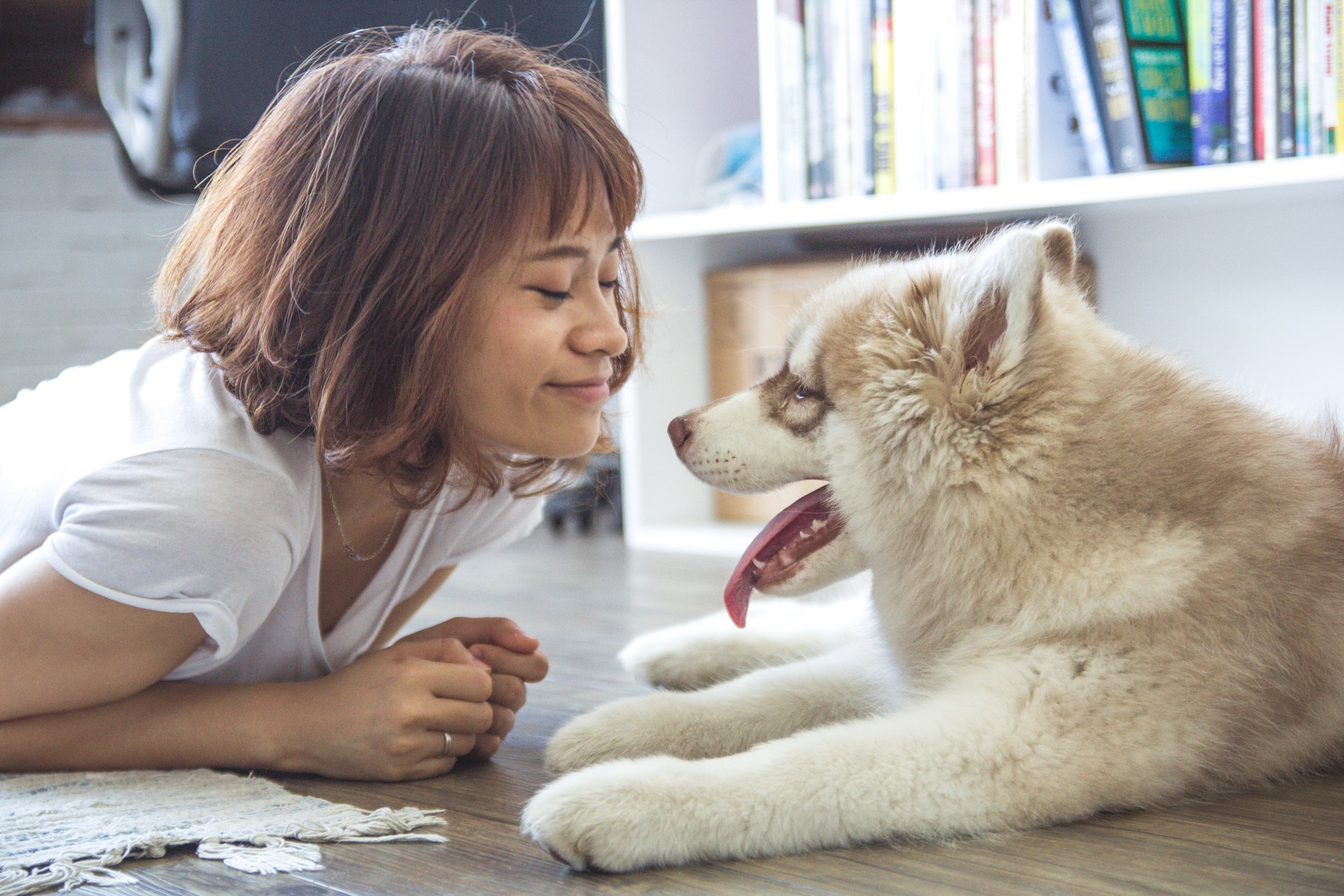Over the years I’ve dealt with more than my fair share of clients whose dog constantly wants attention.
And when I say attention, I’m talking about excessive (not to mention demanding) attention-seeking behavior that borders on close to perpetual harassment.
Now, as much as I know you love your dog, I also understand that you aren’t always in the mood to play for hours on end, especially after a long day at work.
But here’s the thing…
…Even the best-exercised dogs in the world are sometimes just going to be in the mood for playtime.
And even after a nice long walk, they may just be in the mood to bark, jump, beg, or even grab your slippers from under your feet just to get your attention.
There are usually two reasons for this behavior…
Firstly, your dog is just used to getting constant attention either from you, a family member, or even a previous owner. And as a result, they’re simply exhibiting attention-seeking behavior because it’s how they get what they want.
Second, they’ve become needy, fearful, or anxious, and require constant reassurance and companionship to feel safe and secure.
But whatever the reason, it’s still a problem that (if not addressed quickly) can soon spiral out of control leaving you unable to relax or even get a moment’s peace and quiet to yourself.
So what can you do?
Well, attention-seeking behavior is one of those issues that can present itself for many reasons.
For instance lack of socialization, boredom, frustration… These are just a few things that can lead your dog to constantly seek your attention to make up for the mental and physical stimulation they may be lacking otherwise.
So what’s the fix?
Honestly, this can depend on a lot of things that can stem back to the particular breed of dog your own.
Border Collies, for example, would spend hours herding sheep. So their need for exercise and play will likely far outweigh the needs of, let’s say, a French Bulldog that loves nothing more than to kick back and relax.
It’s not just physical exercise either. Smart dog breeds like Golden Retrievers also need a lot of mental stimulation to feel fulfilled and at ease.
That’s why I’d always recommend attempting to engage your dog on a mental level as well as physical to combat any obsession to constantly seek out attention.
If you’re stuck for ideas on mentally challenging games, I’d recommend checking out the Brain Training For Dogs Program by Adrienne Farricelli.
Because if they’re not mentally tired now, trust me, they will be after learning some of the unique games in this program.
Here’s the link again to take a look: Click Here To Discover How To Finally Stop Your Dogs Obsessive, Attention Seeking Behavior And Create The Well-Behaved, Obedient Dog Of Your Dreams!

Why Does My Dog Constantly Want Attention?
There’s plenty of reasons why dogs may become overly attention-seeking.
Some dog breeds naturally demand more attention than others.
For instance, America’s favorite – the Labrador – is a good example of one that thrives amidst busy households but can quickly become bored in more sedate environments.
Charles Spaniels, Shepherds, Collies, and Greyhounds are other popular examples that require plenty of stimulation and engagement.
But there is much more to this problem than just lack of exercise or playtime.
Never forget that dogs who exhibit attention-craving behavior will often revert to naughty behavior when they feel ignored.
They are not doing so for the sake of it, just because they understand that performing certain actions will rile up their owner.
Soft examples of this may be stealing a slipper, much more severe cases could be a housetrained dog opting to defecate indoors for example.
Chewing, stealing food, and just generally destructive behavior will prompt a response from their owner – and even in a fit of rage – that it the attention that they have been demanding!
So tip #1 has to be to always keep your cool.

Is It The Owners Fault?
It’s easy to blame the dog for being naughty but the truth is that in many cases it is actually the owner’s fault.
The reason we keep dogs as pets is that they are naturally affectionate animals.
If we can’t help ourselves from petting and rewarding our do every time it performs unwanted affectionate behavior (jumping on your leg, barking for fun etc) it will simply make them do so more often.
Sooner or later even the most relaxed owner is going to snap – and as mentioned above, the greater the reaction the more they will learn that this provokes our interest.
And the more intense our reaction, the greater the dog feels prized.
Much as it is difficult to ignore our pets. When this kind of behavior becomes truly excessive it is down to us to decide whether or not we react (both positively or negatively) at all.
Often the best way to approach this is to ignore them or at least encourage them to find their own fun.
After all, they ought to have plenty of approved toys to play with and dens to hide in.
Prompting them to find their own amusement is a major step towards preventing overdependence and limiting further behavioral issues such as separation anxiety.
Dogs that accompany their owner everywhere day after day can also start to believe that the world revolves around them.
Consequently, they will demand ever more attention – sometimes around the clock…
Spoiled As A Puppy?
Anyone who has kept a puppy from 8 weeks onwards will know how they demand constant attention.
It is very easy to provide too much care. Of course, engaging with your pup through exercise and play is a crucial part of their early socialization but there is a very fine line between just enough and too much.
Irresistible as they may be, if they become used to constant affection there is a good chance they will expect it to continue into adolescence and adulthood.
This is why it is important to set boundaries from the first few days.
Allowing puppies to sleep on your bed may be nice and cozy – but what about when they’re ten times larger a year later?
Clawing and barking at the bedroom door is one of the most frustrating attention seeking dog behaviors – and yet so easy to prevent from the outset.
Just like timetabling ‘toilet times’, eating times and play times, boundaries set from the start and constantly reinforced are an essential foundation for a playful yet not dependent dog.

Attention Seeking & Neglect
The last thing any responsible owner wants is to neglect their dog.
Obviously, there are many forms of neglect and one of the most damaging is simply ignoring them.
There are many ways which dogs try to engage us – and it may not always be obvious that they wish some acknowledgment.
For this reason, it is important to interact with them as a routine even if they may be crashed out and apparently taking a doze.
Some breeds are naturally passive, and just because they are not attention-seeking doesn’t mean that they are not miserable.
Another factor with neglect issues concerns rescue dogs.
If they have been formerly subjected to abuse and are lucky enough to be rehomed, there is a good chance that they will crave the love and affection that they have missed out on previously.
But what is too much?
It is worth asking the rehoming organization but chances are that they may not know much – and also factor in that such busy places are rarely able to spend much time playing/engaging with individual canines.
The best thing to do is to take things easy and remember to stick to that keyword – routine.
Dog Driving You Crazy? Click Here To Discover How To Finally Stop Your Dogs Obsessive, Attention Seeking Behavior And Create The Well-Behaved, Obedient Dog Of Your Dreams!

Is It A Big Deal If My Dog Constantly Wants Attention?
If the problem is ignored and allowed to develop then it can seriously damage your relationship with your dog.
You are the leader of the pack and what you say goes.
But that is a position that has to be earned and above all else maintained.
Should you instead keep folding over to attention craving behavior then the truth is that your dog is going to start controlling you.
It is no different to just feeding them whenever they demand – playtime is second only to a full belly in their list of priorities.
Just like how you socialize a child to comprehend what is acceptable and unacceptable behavior – it is essential to do the same with your dog.
So what constitutes attention seeking behavior?
As touched on above, the signs can be very subtle and tricky to spot. Key examples include:
- Barking
- Stealing
- Restlessness & pacing
- Licking & chewing
- Nipping & pawing
- Clingingness
Related Post: Is Your Dog Attention Barking? – Here’s Why

What To Do With A Demanding, Attention Seeking Dog
The good news is that there are plenty of techniques that can be used to help realign your dog’s behavior.
With puppies, it is about establishing the rules, and with older dogs, it can often be more of a case of reinforcing them.
And while it can be effective there are certain practices that ought to be avoided.
Perhaps most importantly is to try – difficult as it may be – to not vocalize your discontent.
People often forget that dogs don’t understand Engish, so a “NO!” each time they play up is from their perspective a success.
They have managed to gain your attention, and now they know how to get it every time.
Getting physical – be it pushing them or carrying them away – is going to pass on further negative messages.
Either they will become confused and wonder why their wanting playtime is resulting in a bad-tempered owner, or even worse they’ll just lose respect for you and carry on doing whatever they choose.
From an attention-seeking dogs’ perspective, any attention is a result.
How To Teach A Dog To Settle
Without question, the best way to address attention-craving behavior is to provide everything possible to help your dog just settle down.
Depending on breed and individual temperament this can be either very easy or a longwinded slog!
The four keys to achieving this are:
- Build a den/bed for your dog in the living room
- Discourage any seeking behaviors by ignoring them
- Provide rewards for long periods of ‘settle time’
- Restrict access to specific times
The last of these points is perhaps for most loving owners the most difficult.
After all, your dog is a member of the family.
Yet it is imperative to consider this as a training process and not a permanent change in household policy.
After all, it is only fair that you have a chance to relax and unwind – and when you need some downtime you don’t want to be getting harassed.
Restricting access to your living space is the first step.
For this, you will need a dog barrier/fence that provides a barrier from their settled space to you.
Ideally, keep this inside the living room but far away enough from you to prevent physical access.
Most of the time they will get the message pretty quickly, but if your dog is athletic enough to jump over you may need to resort to putting them in a different room or closing the door.
A crate is another option but should only be considered in extreme cases.
And if they will bark and maybe scrape, just ride it out.
Perform this only after they have had their exercise and a fair designated length of playtime.
Let them enjoy your company at short intervals before putting them back behind their barrier.
Provide plenty of approved distractions of course and most dogs will get the message pretty quickly.
This is why this technique is one of those most professional behavior experts would approve of.
Just keep at it.

Further Settling Techniques
Leashes can provide a useful tool for helping your dog learn to calm down.
You’ll need a bowl of goodies and of course a leash.
Just sit down at a table in a silent room with your dog on a short leash and a long book.
After a few seconds, there’s a strong chance your pet will demand some attention.
Ignore it.
When he eventually gets bored and sits/lies down give them a treat.
Most probably this will make them all excitable again, so get back to reading.
And when they settle again, give them a treat.
It may take a few sessions but any dog will eventually figure out that they will get tasty rewards for being still, but nothing at all for taking on demanding behavior.
If done properly then this is also an excellent boost for when taking your dog out and about, or even if you choose to continue further training.
Dogs that naturally settle are any owner’s dream, and most of the time it can be this easy.
Just keep calm and breathe deep!
Similar principles can be used to get them used to their designated bed/crash-out spot.
Just move your chair, goodie bowl, and book right next to the bed.
Pop Fido in and on a leash short enough to prevent them from struggling out.
When they settle give them a reward.
In both of these examples try and stretch out the times between treats.
When you can get to ten minutes without restfulness, there’s a good chance your dog will have understood the message.
But you should also consider introducing this as a command.
Just before passing your treat calmly say “settle”.
After a few hundred repetitions he will likely understand what this word means and calm down/sit at each command (just keep those treats flowing on a semi-regular basis).
Dog Won’t Leave You Alone? Click Here To Discover How To Finally Stop Your Dogs Obsessive, Attention Seeking Behavior And Create The Well-Behaved, Obedient Dog Of Your Dreams!

Reintroducing Your Dog’s Freedom
It is a good idea to stick to these boundaries until the dog has learned the basics of acceptable behavior and why settling down leads to rewards.
As ever, the root to a dog’s brain is through reward and reinforcement – soon enough it will become second nature.
Choosing when to allow them back into your living space at will is a personal call.
What is important though is that any sign of disruptive attention-seeking behavior is immediately addressed by putting them back in their boundary.
And again, it will take time but they will learn.
The objective is to foster your sole presence being enough attention, and that physical/verbal interaction is a privilege and not a right.
Wrapping Things Up
The second question people always ask about dealing with attention-seeking dogs is “how long will it take?”.
Much as it’d be great to put a set timeline on effective retraining, it depends to an extent about the severity of the problem and your dog’s personality, life experiences, and age.
One rule of thumb that ought to be noted is that there is a strong likelihood that the problem may get worse in the short term.
When you no longer react to their every beg and bark, they will try extra hard to gain a reaction.
Just ride it out and whatever happens, do not respond. Doing so will potentially make the problem even worse!
Dogs who have one through attention-seeking phases are also going to be prone to relapsing.
Even once they have learned the rewards of settling down, it is important to keep up on refresher training especially over the first 2/3 months.
As time goes by it will become second nature, and you will be able to enjoy some peace and quiet again!
FAQ: Frequently Asked Questions On How To Deal With Demanding Attention Seeking Dogs!
Question #1…
Is it true that certain dog breeds need more attention than others?
Answer…
While all dogs will have their own unique personalities, there are certain breeds that are more prone to demonstrate attention-seeking behavior based on their background.
For instance, Golden Retrievers and Border Collies were originally bred to be working dogs. So it probably comes as no surprise that these particular breeds have a tendency to cling to their master more than others.
Having said that, no dog is immune from developing attention-seeking behavior, so I guess part of it might be down to luck.
However, it’s important to keep tabs on your own behavior first and foremost. As there is always a possibility you are unknowingly reinforcing the behavior without realizing it.
Question #2…
I’ll read a lot about separation anxiety being the culprit for attention-seeking behavior. How do I know if my dog has separation anxiety?
Answer…
This is a behavioral trait that can be a little tricky to deal with. As dogs with separation anxiety can display a lot of troubling behavior like barking, aggression, submissive urination, and destructive behavior in general.
Some of the tell-tale signs to look out for here can usually be found in the aftermath once you’ve reestablished contact with your dog.
To give you an example…
Let’s say you shut your dog in their crate and then head out for 10 minutes.
If, when your return, your dog immediately stops barking (or doing whatever they were doing) and appears to be happy and content. Then they’re likely to just be demonstrating general attention-seeking behavior.
If, however, they appear to be shaken, refuse to move, or genuinely fearful, then your probably dealing with a cold, hard case of separation anxiety.
